The Ultimate Guide to Cardio Training is your comprehensive resource to understanding the benefits, types, and techniques of cardiovascular exercise. Whether you’re a beginner looking to improve overall fitness or an experienced athlete aiming to enhance endurance, cardio training is an essential part of any workout routine. Not only does it improve heart health and boost energy levels, but it also supports weight loss, enhances mental well-being, and helps build stamina.
In this guide, we’ll explore everything you need to know about cardio—from understanding different heart rate zones to choosing the right exercises for your goals. You’ll learn how to tailor your cardio workouts based on your fitness level and discover tips for overcoming common challenges and plateaus. As technology continues to advance, we’ll also dive into the exciting future of cardio training, where virtual reality, AI-powered plans, and advanced wearables are revolutionizing the way we work out.
Whether your goal is to lose weight, build endurance, or simply stay active, this guide will equip you with the knowledge and tools to make cardio training a key part of your fitness journey.
What is Cardio Training?
Cardio training, short for cardiovascular training, refers to any type of exercise that raises your heart rate and increases your breathing to improve the efficiency of your heart, lungs, and circulatory system. It is a key component of fitness that enhances overall health, helping to strengthen your heart and lungs, improve endurance, and burn calories.
In this guide, we’ll explore various types of cardio workouts, their benefits, and the techniques you can use to get the most out of your training. Whether you’re looking to improve your stamina, lose weight, or simply boost your energy levels, cardio training is an essential part of a balanced fitness routine.

Most forms of cardio training are aerobic in nature, meaning they require oxygen to fuel your body during sustained activity. Some popular examples include running, cycling, swimming, and even brisk walking. The beauty of cardio is its versatility—you can tailor it to suit your fitness level, goals, and preferences.
Regular cardio training helps reduce the risk of chronic diseases such as heart disease, diabetes, and high blood pressure. It also boosts your mental health by reducing stress and improving mood, thanks to the release of endorphins, commonly known as the “feel-good” hormones
The Science Behind Cardiovascular Exercise
Cardiovascular exercise, or simply cardio, triggers a range of physiological responses in your body that contribute to enhanced fitness and overall health. When you engage in activities like running, swimming, or cycling, your body works hard to meet the increased energy demand. This leads to a series of adaptations that make your heart, lungs, and muscles more efficient over time.
Increased Heart Rate and Blood Flow
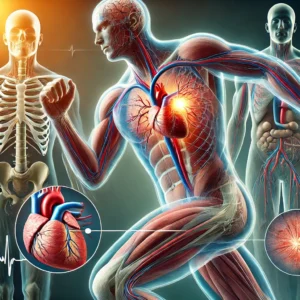
During cardio, your heart rate rises to pump more blood throughout your body, delivering oxygen and nutrients to your working muscles. This improved circulation supports muscle function and helps remove waste products like carbon dioxide and lactic acid, preventing fatigue. Over time, regular cardiovascular exercise strengthens your heart muscle, allowing it to pump more blood with each beat and lowering your resting heart rate—a key indicator of cardiovascular fitness.
Expanded Lung Capacity
Cardio also places a demand on your respiratory system. As your muscles require more oxygen, your breathing rate increases, and your lungs work harder to supply oxygen-rich air. With consistent training, your lungs become more efficient at oxygen exchange, and your body can perform sustained physical activity without as much effort. This leads to increased lung capacity, meaning you can breathe more deeply and comfortably during exercise.
Boosted Mitochondrial Density in Muscles
Mitochondria are often referred to as the powerhouses of cells, responsible for producing energy. Regular cardiovascular exercise stimulates an increase in mitochondrial density within your muscles, meaning more energy is available for sustained effort. This adaptation allows your muscles to work harder and for longer periods without fatiguing, improving your overall stamina and endurance.

Enhanced Oxygen Utilization
Through cardio training, your body becomes better at using oxygen to generate energy. This is known as improved VO2 max, which refers to the maximum amount of oxygen your body can utilize during intense exercise. A higher VO2 max is associated with superior cardiovascular fitness, allowing you to push your body harder and recover faster.
These physiological changes are essential to improving your cardiovascular health. By consistently engaging in cardio workouts, you’re not only strengthening your heart and lungs but also enhancing your body’s ability to efficiently use energy and oxygen, leading to greater endurance and overall fitness.
Key Benefits of Regular Cardio Training
Engaging in regular cardio training offers a wide array of benefits that improve both physical and mental well-being. Whether you’re aiming to boost your fitness, improve heart health, or simply feel more energized, consistent cardiovascular exercise can make a significant impact on your overall health.
Improved Heart Health
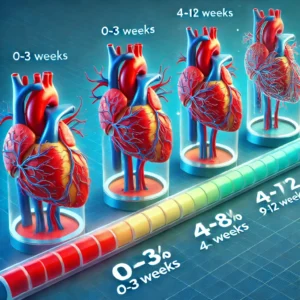
One of the most important benefits is its positive effect on your heart. Cardio strengthens the heart muscle, allowing it to pump blood more efficiently throughout your body. Over time, this can lower your resting heart rate and reduce your risk of heart-related conditions such as hypertension, heart disease, and stroke. Regular cardio also helps to maintain healthy blood pressure and cholesterol levels, contributing to long-term cardiovascular health.
Timeframe: 3–12 weeks
Heart health improvements begin after about 3 weeks of regular cardio, with significant improvements in resting heart rate, blood circulation, and blood pressure occurring within 6–12 weeks.
Enhanced Lung Capacity
Cardio exercises challenge your respiratory system, leading to increased lung capacity. As your breathing becomes more efficient, your lungs can supply more oxygen to your body, helping you to perform daily tasks and workouts with less effort. Improved lung function also benefits people with respiratory issues, providing better oxygen exchange and overall respiratory health.
Timeframe: 4–8 weeks
Lung capacity improvements can typically be noticed within 4 weeks as breathing becomes more efficient, especially during exercise. Full adaptation, however, may take up to 8 weeks.
Weight Management
Regular cardiovascular activity is an excellent way to burn calories and manage weight. By increasing your heart rate and utilizing stored energy, cardio helps you create a calorie deficit, which is crucial for weight loss or maintenance. Combined with a balanced diet, cardio can help you achieve and maintain a healthy weight while reducing body fat.
Timeframe: 2–12 weeks (depending on diet and intensity)
Noticeable weight loss or body composition changes can occur as early as 2–4 weeks, depending on the intensity of the exercise and the balance of caloric intake. Sustainable weight loss usually becomes more evident after 6–12 weeks of consistent cardio training combined with proper nutrition.
Reduced Risk of Chronic Diseases
Cardio training plays a crucial role in preventing chronic diseases such as type 2 diabetes, high blood pressure, and certain cancers. By keeping your body in shape and improving insulin sensitivity, regular cardio helps reduce the risk of developing these conditions. Moreover, it strengthens the immune system, enhancing your body’s ability to fight off infections and illnesses.
Timeframe: 6–12 weeks
Significant risk reduction for chronic diseases like diabetes, hypertension, and heart disease becomes evident after 6–12 weeks of regular cardio. Improved insulin sensitivity and cholesterol levels contribute to this.
Boosted Mood and Mental Health
Cardio training not only benefits your body but also significantly improves your mental health. Physical activity stimulates the release of endorphins, which are natural mood enhancers, reducing stress, anxiety, and symptoms of depression. It also promotes mental clarity, sharper focus, and an overall sense of well-being. The mind-body connection through regular cardio can be a powerful tool in managing everyday stress.
Timeframe: Immediate – 4 weeks
Mood-boosting effects can be felt after just one session, with endorphin levels rising immediately. Consistent improvement in mental health and reduced anxiety or depression symptoms typically occur within 2–4 weeks.
Increased Energy Levels
Contrary to the belief that exercise tires you out, regular cardio boosts your energy levels. By improving cardiovascular efficiency and oxygen delivery, your body becomes more capable of performing daily activities with less fatigue. This increase in energy translates into feeling more awake and alert throughout the day.
Timeframe: 1–3 weeks
Cardio improves energy levels quickly, often within a week of starting regular exercise. The body adapts by increasing oxygen delivery, making daily activities easier and less fatiguing. Significant improvements in energy typically occur by week 3.
Better Sleep Quality

Regular physical activity, including cardio, has been shown to improve the quality of sleep. Exercise helps regulate your circadian rhythm, making it easier to fall asleep and stay asleep. As a result, you’ll feel more refreshed and rested, improving your performance in both physical and mental activities during the day.
Timeframe: 2–6 weeks
Consistent cardio training can improve sleep patterns within 2 weeks, with noticeable changes in sleep quality, depth, and duration by the 6-week mark.
Types of Cardio Exercises
Cardio exercises come in various forms, allowing you to choose the activities that best fit your preferences, fitness level, and goals. From high-intensity workouts to more moderate, steady-paced options, there’s a type of cardio for everyone.
Running and jogging are among the most popular and accessible forms of cardio. Whether done outdoors or on a treadmill, they provide an excellent workout for the heart and lungs, strengthening leg muscles and improving endurance. Running is more intense, while jogging offers a slightly lower-impact option for those easing into higher levels of cardio.
Cycling, either on a stationary bike or outdoors, is a fantastic low-impact cardio workout that builds leg strength and stamina. It can be performed at a leisurely pace for a steady-state cardio session or with intense intervals for a more challenging workout. Cycling is great for individuals looking to reduce stress on their joints while still getting a full cardiovascular workout.
Swimming engages the entire body, making it a full-body cardiovascular workout. It’s particularly beneficial for individuals with joint issues or those looking for a low-impact activity. The resistance of the water helps tone muscles while simultaneously providing a cardiovascular challenge, improving lung capacity and heart health.
Walking at a brisk pace is an excellent low-impact cardio option, especially for beginners or those looking for a moderate-intensity workout. It’s easy to incorporate into your daily routine and is perfect for building stamina, improving circulation, and maintaining overall cardiovascular health.
Rowing, whether on a rowing machine or in the water, is a powerful cardio workout that targets both the upper and lower body. It builds strength, endurance, and cardiovascular fitness while being low-impact on the joints. Rowing sessions can be adjusted for intensity, from steady-state to more vigorous bursts of power.
Jumping rope is a simple yet highly effective cardio workout that can be done almost anywhere. It’s great for building coordination, improving heart rate, and burning calories in a short amount of time. The intensity can be adjusted with speed and complexity of jumps, making it suitable for all fitness levels.
Dancing is not only fun but also a great way to get your heart rate up. From Zumba classes to dance cardio routines, it provides a full-body workout that improves coordination, flexibility, and cardiovascular endurance. Plus, it’s an excellent way to burn calories while enjoying music and movement.
HIIT involves alternating short bursts of intense exercise with brief rest periods. This form of cardio is known for its efficiency, as it can improve cardiovascular fitness in a shorter amount of time compared to steady-state cardio. HIIT workouts can include exercises like sprinting, cycling, or bodyweight movements and are perfect for those looking for quick, effective training sessions.
LISS cardio involves maintaining a consistent, moderate pace for an extended period. Examples include walking, cycling, or swimming at a steady pace. LISS is ideal for those who prefer longer, lower-impact sessions and can be especially effective for fat loss and recovery from more intense workouts.

Understanding Heart Rate Zones in Cardio
To get the most out of your training, it’s important to understand heart rate zones. These zones help you measure exercise intensity and ensure you’re training at the right level to meet your fitness goals. By calculating your maximum heart rate (usually estimated as 220 minus your age), you can use these zones to optimize your cardio workouts. Each zone serves a different purpose, offering unique benefits that range from fat burning to improving endurance and speed.
50-60% of Max Heart Rate (Very Light Intensity)
This zone is perfect for beginners or for warm-ups and cool-downs. It involves very light effort, like a casual walk or light stretching, where your heart rate remains relatively low. Although you won’t feel like you’re working hard, Zone 1 still promotes active recovery, improves blood circulation, and can help you recover from more intense workouts.
Benefits:
- Active recovery
- Improved circulation
- Low-intensity fat burning
60-70% of Max Heart Rate (Light Intensity)
Zone 2 is often referred to as the “fat-burning zone” because your body primarily uses fat for energy at this intensity. Activities like brisk walking, light cycling, or a relaxed jog keep you in this zone. It’s a sustainable intensity for longer durations, making it ideal for building endurance and enhancing overall cardiovascular health.
Benefits:
- Fat burning
- Improved aerobic base
- Increased endurance
70-80% of Max Heart Rate (Moderate Intensity)
In Zone 3, your heart rate is elevated to a moderate intensity where you can still hold a conversation, but you’re working hard enough to sweat. This is the sweet spot for most steady-state cardio activities like running, swimming, or rowing. Training in this zone improves aerobic capacity and builds stamina, helping you go longer and stronger in your workouts.
Benefits:
- Improved aerobic capacity
- Increased stamina
- Enhanced overall fitness
80-90% of Max Heart Rate (Hard Intensity)
Zone 4 pushes you into high-intensity territory. At this level, your body starts relying more on glycogen (stored carbohydrates) for energy. Activities like sprinting, intense cycling, or high-intensity interval training (HIIT) often push you into this zone. Training here improves speed, power, and overall cardiovascular strength, but it’s more demanding and should be done in shorter intervals to avoid burnout
Benefits:
- Enhanced speed and power
- Improved cardiovascular strength
- Increased anaerobic threshold
90-100% of Max Heart Rate (Maximum Effort)
Zone 5 is all about maximum effort. At this level, you’re pushing your body to its limit with activities like all-out sprints or very high-intensity HIIT. This zone can only be sustained for short bursts and is designed to boost performance, improve anaerobic capacity, and develop fast-twitch muscle fibers. Training in Zone 5 is intense, and recovery is key to prevent overtraining.
Benefits:
- Peak performance
- Increased anaerobic capacity
- Development of fast-twitch muscle fibers
Understanding these heart rate zones can help you tailor your cardio workouts to your specific goals—whether it’s fat loss, endurance building, or performance enhancement. By training within the appropriate zone, you can ensure your cardio sessions are both effective and efficient.
HIIT vs. LISS: Comparing Cardio Intensities
When it comes to cardio, two popular methods stand out: High-Intensity Interval Training (HIIT) and Low-Intensity Steady State (LISS). Both approaches offer unique benefits and can be tailored to fit your fitness goals. Understanding the differences between these two training styles will help you choose the one that best suits your needs.

High-Intensity Interval Training (HIIT)
HIIT involves alternating between short bursts of intense exercise and periods of rest or low-intensity activity. The goal is to push your body to near maximum effort during the intense intervals, followed by brief recovery periods. This type of workout is typically shorter in duration but highly effective in burning calories and improving cardiovascular fitness.
Short bursts of intense exercise
HIIT workouts often involve exercises like sprinting, cycling, or bodyweight movements such as burpees and jump squats. These exercises are performed at maximum intensity for short periods, usually 20-60 seconds.
Followed by periods of rest or low-intensity exercise
After each burst of intense activity, you transition into a rest period or low-intensity exercise, allowing your body to recover before the next interval.
Efficient for burning calories and improving cardiovascular fitness
HIIT is known for its efficiency. In a relatively short amount of time, you can achieve significant calorie burn and improve your cardiovascular health. HIIT also boosts metabolism, allowing you to continue burning calories even after the workout ends.
Low-Intensity Steady State (LISS)
LISS, on the other hand, involves sustained, lower-intensity exercise performed over a longer duration. Unlike HIIT, which alternates intensity, LISS maintains a steady pace throughout the workout, making it less physically demanding but ideal for endurance and recovery.
Sustained, lower-intensity exercise
LISS activities include walking, jogging, swimming, or cycling at a comfortable pace. The key is to maintain a consistent effort that doesn’t leave you feeling out of breath.
Typically longer duration
LISS sessions are often longer than HIIT workouts, lasting anywhere from 30 minutes to an hour or more. This allows your body to remain in a fat-burning zone for an extended period.
Great for building endurance and recovery
LISS is ideal for individuals looking to improve their endurance and stamina. It’s also a perfect recovery workout after more intense training sessions, as it’s easy on the joints and less taxing on the body.
Which One Should You Choose?
The choice between HIIT and LISS depends on your goals, fitness level, and preferences. If you’re looking for an efficient, calorie-burning workout in a short amount of time, HIIT is a great option. However, if you prefer a more sustainable, lower-impact workout that builds endurance and allows for recovery, LISS may be better suited for you. Both methods can complement each other in a balanced fitness routine.
Creating an Effective Cardio Workout Plan
Developing an effective cardio workout plan is key to achieving your fitness goals, whether you’re aiming to improve your endurance, lose weight, or boost overall cardiovascular health. To build a successful plan, it’s important to structure your workouts in a way that aligns with your current fitness level, goals, and preferences. Here’s how to design the perfect plan that works for you:
Step 1:
Assess Your Current Fitness Level
Before you start, it’s important to evaluate where you are in terms of fitness. Are you just starting out, or do you already have experience with regular exercise? This will help determine the intensity and type of cardio you can handle without risking injury. For beginners, lower-intensity exercises like brisk walking or cycling might be more appropriate, while experienced athletes can incorporate higher-intensity workouts such as running or HIIT.
Step 2:
Set Clear, Achievable Goals
Having clear, specific goals will guide your workout plan and keep you motivated. Do you want to improve endurance, lose weight, or enhance your cardiovascular health? Make sure your goals are measurable and time-bound, such as “run a 5K in three months” or “lose 10 pounds in six weeks.” This gives you a clear path and helps track your progress.
Step 3:
Choose Appropriate Cardio Types
Select cardio exercises that align with your goals, fitness level, and preferences. If you enjoy the activity, you’re more likely to stick with it. Options include running, cycling, swimming, walking, dancing, or rowing. You can also mix different types of cardio to keep things interesting and work different muscle groups. For example, if you enjoy variety, you might alternate between cycling and swimming throughout the week.
Step 4
Determine Frequency and Duration
How often and how long you should exercise depends on your goals and schedule. For general health, the American Heart Association recommends at least 150 minutes of moderate-intensity or 75 minutes of vigorous-intensity cardio per week. This can be broken down into manageable sessions, such as 30 minutes of exercise five times a week. If you’re working towards a specific goal, you may need to adjust the frequency and duration of your sessions accordingly.
Step 5
Incorporate Variety to Prevent Boredom
Boredom is one of the main reasons people abandon their workout routines. To stay engaged, include a variety of exercises in your plan. Mixing up different activities—such as alternating between HIIT and LISS workouts or swapping running for swimming—can keep things fresh and exciting while also preventing plateaus in your progress.
Step 6
Gradually Increase Intensity and Duration
As your fitness improves, it’s important to gradually increase the intensity and duration of your workouts to continue challenging your body. You can increase your workout duration by 5–10 minutes per session or add short bursts of higher-intensity intervals to a steady-state workout. However, avoid making drastic changes too quickly, as this could lead to burnout or injury.
Step 7
Include Proper Warm-Up and Cool-Down
To prevent injury and ensure your body is ready for the workout ahead, always include a proper warm-up. This should consist of light activity, like brisk walking or dynamic stretching, to get your blood flowing and muscles warmed up. Similarly, cool down after your workout with light activity and static stretching to help your muscles recover and reduce soreness.
Essential Equipment for Cardio Training
Many cardio exercises can be done without any equipment, but having the right tools can enhance your workouts and help you track progress more effectively. Whether you prefer to exercise at home, outdoors, or in a gym, here’s a list of essential equipment that can elevate your training experience:
Good-quality running shoes are crucial for exercises like running, jogging, or brisk walking. Proper footwear provides support, reduces the risk of injury, and enhances comfort during longer sessions. Look for shoes that fit well, provide cushioning, and are designed for the specific type of cardio activity you’re engaging in, whether it’s road running, trail running, or indoor treadmill use.
Learn Everything you need to know about running shoes here
A heart rate monitor is a valuable tool for tracking your intensity level during cardio workouts. It allows you to stay within specific heart rate zones, ensuring you’re working at the right intensity for your goals, whether it’s fat burning, endurance building, or performance enhancement. Many heart rate monitors sync with fitness trackers, providing real-time data on your workout.
Learn Everything you need to know about heart rate monitors here
Fitness trackers, like smartwatches, help you monitor your daily activity, including steps taken, calories burned, and heart rate. These devices offer valuable insights into your cardio sessions, helping you set goals and track your progress over time. Many fitness trackers also come with features like GPS, sleep tracking, and reminders to stay active.
Learn Everything you need to know about fitness trackers here
A treadmill is one of the most popular pieces of cardio equipment, allowing you to walk, jog, or run indoors, regardless of weather conditions. Treadmills often come with adjustable speed and incline settings, making it easy to customize your workouts for increased intensity or variety. They’re ideal for both steady-state cardio and high-intensity interval training (HIIT).
Stationary bikes provide a low-impact cardio option that’s easy on the joints, making them a great choice for people of all fitness levels. Many stationary bikes offer resistance settings, allowing you to simulate different terrains and intensities. They’re perfect for both steady-state sessions and interval training, offering flexibility and convenience.
A rowing machine delivers a full-body workout that targets both the upper and lower body while improving cardiovascular endurance. It’s a low-impact option that’s easy on the joints but still highly effective for burning calories and building stamina. Rowing machines are ideal for those looking for a more comprehensive cardio workout.
A jump rope is a simple yet effective piece of equipment for cardio training. It’s highly portable, affordable, and provides a great workout in a short amount of time. Jumping rope improves coordination, increases heart rate, and burns calories quickly, making it ideal for interval training or as a warm-up before a more intense workout.
Learn Everything you need to know about skipping/ Jump rope here
While not typically used during cardio exercises, resistance bands can be a great addition to your workout routine for cross-training. They’re useful for strengthening and toning muscles, improving flexibility, and supporting injury prevention. Incorporating resistance bands into your cardio routine can help build overall strength, complementing your cardiovascular fitness.
Learn Everything you need to know resistance bands here
Proper Techniques and Form for Common Cardio Exercises
Maintaining proper form during exercises is essential not only for maximizing effectiveness but also for preventing injury. Whether you’re running, cycling, or swimming, focusing on technique will help you perform better, reduce fatigue, and enjoy a safer workout. Here are the key points to keep in mind for these popular cardio activities:
Running
Proper running form is essential for maintaining efficiency, reducing impact on your joints, and preventing injuries. By focusing on your posture, foot strike, and breathing, you can run more effectively and comfortably.
Keep your head up, shoulders relaxed, and your core engaged. Avoid slouching or leaning too far forward, as this can place unnecessary strain on your lower back.
Strive to land on your mid-foot rather than your heels. Heel striking can create a braking effect, increasing impact on your knees and joints. A mid-foot strike helps with better shock absorption and keeps you moving efficiently.
Focus on rhythmic breathing, ideally in sync with your strides. Controlled breathing helps regulate oxygen intake, reducing fatigue during longer runs. You can experiment with breathing patterns like 3:2 (three steps for every inhale and two for every exhale) to maintain a steady rhythm.

Cycling
Whether you’re cycling outdoors or on a stationary bike, proper form is key to preventing discomfort and improving your overall performance. Pay close attention to bike setup and posture to ensure a smooth ride.
Your seat should be at a height where, at the bottom of the pedal stroke, your leg has a slight bend in the knee. This prevents overextension and reduces strain on your knees while ensuring efficient pedaling.
- Avoid locking your knees. Keeping a slight bend ensures smoother movement and reduces the risk of injury over longer rides.
Tension in the shoulders and arms can cause discomfort and fatigue. Maintain a light grip on the handlebars, keeping your elbows slightly bent, and focus on relaxing your upper body while your legs do the work.

Swimming
Swimming is a full-body workout that requires precise technique for maximum efficiency in the water. By focusing on body position, breathing, and rotation, you can swim more effectively while conserving energy.
Aim to keep your body as flat and streamlined as possible in the water. A streamlined body position reduces drag and allows you to move through the water with less resistance, improving speed and endurance.
For efficient strokes, especially in freestyle swimming, rotate your body from the hips, not just the shoulders. This rotation helps engage your core and larger muscle groups, making each stroke more powerful and reducing strain on the arms.
Breathe on both sides (bilaterally) to develop a balanced stroke. This not only improves symmetry in your swimming form but also helps reduce muscle imbalances over time.

Nutrition and Hydration for Optimal Cardio Performance
To get the most out of your workouts, fuelling your body with the right nutrition and staying properly hydrated are crucial. What you eat and drink before, during, and after exercise can significantly impact your energy levels, endurance, and recovery. Here are key tips for optimizing your performance through nutrition and hydration:
Eat a Balanced Diet
A well-rounded diet is the foundation of good cardio performance. Focus on meals that include a balance of complex carbohydrates, lean proteins, and healthy fats.


- Complex carbohydrates (whole grains, fruits, vegetables) provide your body with sustained energy for long-duration cardio sessions by replenishing glycogen stores in your muscles.
- Lean proteins (chicken, fish, legumes) help repair and build muscles, essential for recovery and maintaining muscle mass.
- Healthy fats (avocados, nuts, olive oil) support energy production and help with the absorption of fat-soluble vitamins.
Stay Hydrated
Hydration is key to maintaining optimal performance, especially during cardio exercises where fluid loss through sweat is high. Make sure to hydrate before, during, and after your workouts:


- Before your workout: Drink water or a sports drink 1-2 hours before exercising to ensure you’re starting hydrated.
- During your workout: For cardio sessions lasting less than an hour, water should be sufficient. For longer or more intense workouts, consider drinking an electrolyte-infused sports drink to replenish sodium and potassium lost through sweat.
- After your workout: Rehydrating after cardio is crucial for recovery. Drinking water or a sports drink post-exercise helps restore fluid balance and supports muscle recovery.
Consider Pre-Workout Snacks for Energy
Eating a small snack before your workout can help provide the necessary energy to power through your cardio session. Choose easily digestible foods that won’t weigh you down, but will keep your energy levels steady:


- Pre-workout snacks: A banana, oatmeal with fruit, or a small smoothie are great options. These foods provide quick-digesting carbohydrates for energy without causing digestive discomfort during exercise.
- Aim to eat your pre-workout snack about 30-60 minutes before your cardio session to allow your body time to digest and absorb the nutrients.
Replenish with Post-Workout Meals for Recovery
After a cardio session, it’s important to replenish the nutrients your body used during exercise. A well-balanced post-workout meal helps repair muscles, restore glycogen, and promote recovery.


Tracking Progress and Measuring Cardio Fitness
To ensure you’re making the most of your workouts and improving over time, it’s important to track your progress. By regularly monitoring key fitness markers, you can see how your endurance, strength, and overall cardiovascular health are improving. Here are several effective methods to measure and track your cardio fitness:
Heart Rate Measurements
Monitoring your heart rate during exercise provides insight into how hard your body is working. Use a heart rate monitor or fitness tracker to measure your heart rate in different zones, from light to maximum effort. By tracking your heart rate over time, you can see improvements in how efficiently your heart works during sessions.
Resting heart rate
A lower resting heart rate over time is a sign of improved cardiovascular health, as your heart becomes more efficient at pumping blood.
Time to Complete a Set Distance
If you’re focused on improving speed or endurance, tracking how long it takes you to complete a set distance is an excellent measure of progress. Whether you’re running, cycling, or swimming, record the time it takes to cover a distance like 1 mile or 5 kilometres. As you become fitter, you’ll likely notice these times decreasing.
Example
If you run 5 kilometers, track how long it takes you to complete the distance. Over time, as your stamina and strength improve, your time will decrease.
Distance Covered in a Set Time
Alternatively, you can track how much distance you cover in a set amount of time. This method works well if you prefer timed workouts over specific distances. Over time, as your cardiovascular fitness improves, you’ll find yourself covering more ground within the same timeframe.
Example
During a 30-minute run, track the distance you cover. Over weeks or months, the distance will increase as your fitness improves.
Perceived Exertion Levels
The Rate of Perceived Exertion (RPE) scale allows you to gauge how hard you’re working based on how you feel during exercise. This subjective measure ranges from 1 (very light) to 10 (maximum effort). Over time, as your fitness improves, exercises that once felt difficult will start to feel easier, and your RPE will lower for the same intensity level.
Example
A workout that used to feel like an 8 on the exertion scale may start to feel like a 5 as your fitness improves.
Resting Heart Rate
Tracking your resting heart rate is an easy and effective way to measure improvements in your cardiovascular health. A lower resting heart rate means your heart is stronger and can pump blood more efficiently with fewer beats. To track this, measure your heart rate first thing in the morning before getting out of bed. Over time, you should notice a gradual decrease in your resting heart rate.
Example
A resting heart rate of 70 beats per minute (bpm) may decrease to 60 bpm after several weeks of consistent cardio training.
Recovery Time After Exercise
How quickly your heart rate returns to normal after a workout is a strong indicator of cardiovascular fitness. The faster your heart rate recovers after exercise, the fitter you are. Measure your heart rate immediately after finishing a workout and again a minute later. Over time, your recovery rate will improve, with your heart rate returning to normal faster.
Example
If your heart rate was 160 bpm at the end of a workout and drops to 120 bpm within one minute, this indicates good cardiovascular recovery.
Combining Cardio with Strength Training
Balancing cardio and strength training is one of the most effective ways to maximize overall fitness, as both types of exercise complement each other. While cardio improves endurance and cardiovascular health, strength training builds muscle, improves metabolism, and enhances overall body composition. Here’s how to combine the two for the best results:

Alternate Cardio and Strength Days
One of the simplest ways to combine cardio and strength training is to alternate between the two on different days. This method allows you to focus fully on each type of workout without overloading your muscles or cardiovascular system.
- Example: You can alternate cardio workouts like running or cycling on one day, followed by strength-focused sessions like weightlifting or resistance training the next day. This approach gives your muscles time to recover while still allowing you to work on your cardio fitness.
Consider Concurrent Training
Concurrent training involves combining both cardio and strength training in the same workout session. This method can be highly effective, especially for those with limited time to exercise. However, the sequence matters: for best results, it’s generally recommended to do strength training first, followed by cardio. This ensures that your muscles have maximum energy for lifting weights before you move on to endurance work.
- Example: Start with a 30-minute strength training session (e.g., squats, deadlifts, or push-ups) followed by 20 minutes of moderate-intensity cardio (e.g., running or cycling). This combination improves both muscle strength and cardiovascular endurance in one session.
Use Circuit Training to Incorporate Both
Circuit training is a highly efficient way to combine cardio and strength training into one workout. In circuit training, you alternate between strength exercises and short bursts of cardio with minimal rest between sets. This keeps your heart rate elevated while working multiple muscle groups, providing a full-body workout in a short amount of time.
- Example: Set up a circuit with exercises like squats, push-ups, and lunges, interspersed with 1-minute cardio intervals like jumping jacks or burpees. Repeat the circuit 3-4 times for an intense workout that targets both strength and cardio.
Ensure Adequate Recovery Between Sessions
When combining cardio and strength training, it’s important to prioritize recovery to prevent overtraining. Adequate rest allows your muscles to recover and grow stronger, while also helping to avoid burnout and fatigue. Aim for at least one or two rest days per week, and listen to your body to determine when you need extra recovery time.
- Example: If you feel sore or fatigued after a few days of training, consider taking an active rest day with light stretching or walking to help your muscles recover without overloading your body.
Overcoming Common Cardio Challenges and Plateaus
No matter how dedicated you are to your cardio routine, it’s normal to encounter challenges and plateaus along the way. Whether you’re dealing with boredom, motivation issues, or time constraints, there are effective strategies to keep your workouts fresh and continue making progress. Here’s how to overcome some of the most common cardio challenges:
Boredom: Vary Your Routine and Try New Activities
Doing the same cardio workout repeatedly can lead to boredom and a lack of motivation. To keep things exciting, vary your routine by trying different activities or changing your workout environment.
Mix up your workouts by incorporating new forms of cardio, such as swimming, cycling, rowing, or dance classes. You can also explore outdoor options like hiking or trail running to break up the monotony of indoor workouts.
Plateaus: Gradually Increase Intensity or Duration
Hitting a plateau is a common issue when your body adapts to your current workout routine. If you’re no longer seeing progress, it’s time to switch things up by increasing the intensity, duration, or complexity of your cardio sessions.
Gradually increase your workout duration by adding 5-10 minutes to each session, or introduce intervals of higher intensity. For example, add short sprints to a steady-state run or increase the incline on a treadmill to challenge your body in new ways.
Time Constraints: Incorporate HIIT for Efficiency
Finding time for longer cardio sessions can be challenging, especially with a busy schedule. Fortunately, High-Intensity Interval Training (HIIT) offers a solution that provides the benefits of cardio in a shorter amount of time.
Include HIIT workouts in your routine to maximize efficiency. A 20-30 minute HIIT session can deliver the same, if not greater, benefits as a longer steady-state cardio workout by alternating between intense exercise bursts and short recovery periods.
Motivation: Set Goals and Track Progress
Maintaining motivation over time can be difficult, particularly when you’re not seeing immediate results. Setting clear goals and tracking your progress can help you stay focused and committed to your cardio routine.
Set specific, measurable goals, such as running a certain distance, achieving a target heart rate, or improving your time for a set distance. Use a fitness tracker, app, or journal to log your workouts and celebrate small victories along the way to keep yourself motivated.
Weather: Have Indoor Alternatives Ready
Weather conditions can sometimes derail outdoor cardio plans, but having indoor alternatives will ensure you never miss a workout.
On days when it’s too hot, cold, or rainy to exercise outdoors, switch to indoor cardio options like treadmill running, cycling on a stationary bike, or bodyweight HIIT workouts. Having a backup plan will keep your fitness goals on track, regardless of the weather.
Recovery and Injury Prevention in Cardio Training
Recovery and injury prevention are just as important as the workout itself when it comes to cardio training. Ensuring that your body has time to heal and recover between sessions helps prevent injuries, keeps your progress on track, and improves overall performance. Here are key practices to follow for safe and effective cardio training:
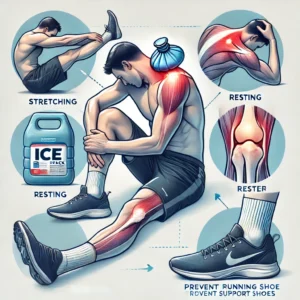
Warm Up Properly Before Each Session
Warming up before a cardio workout prepares your body for the activity ahead by increasing blood flow to your muscles and loosening up your joints. A proper warm-up reduces the risk of injury and helps you perform better during the session.
Spend 5-10 minutes doing light aerobic activity, such as walking, jogging, or dynamic stretches like leg swings or arm circles. This prepares your muscles for more intense activity and reduces the risk of strains or pulls.
Cool Down and Stretch After Workouts
Cooling down after a workout helps your body transition back to a resting state. Stretching during the cool-down phase improves flexibility, reduces muscle stiffness, and promotes quicker recovery.
After your workout, spend 5-10 minutes doing light movement, like walking, followed by static stretching to release muscle tension. Focus on areas that worked hardest, such as the legs and hips for runners or the upper body for swimmers.
Incorporate Rest Days into Your Routine
Rest days are essential for allowing your muscles to recover and repair after cardio training. Overworking your body without adequate rest increases the risk of injury, fatigue, and burnout.
Schedule at least 1-2 rest days per week, especially after high-intensity cardio sessions. On rest days, consider doing light, active recovery activities such as walking or yoga to promote circulation without overloading your muscles.
Listen to Your Body and Avoid Overtraining
Pushing through pain or ignoring signs of fatigue can lead to overtraining, which increases your risk of injury and can negatively affect your overall performance. Always pay attention to how your body feels and give yourself extra rest if needed.
- If you feel unusually sore, fatigued, or are experiencing pain in your joints or muscles, it’s a sign to take a break. Adjust your training intensity and volume to match your recovery needs, and don’t be afraid to modify or skip workouts if necessary.
Use Proper Equipment and Maintain Good Form
Using the right equipment and maintaining proper form during cardio exercises is crucial for preventing injuries. Poor form or faulty equipment can place undue stress on your muscles and joints, leading to injury over time.
Ensure you have supportive running shoes, a well-fitted bike, or other equipment specific to your activity. Pay close attention to your form during workouts—whether running, cycling, or swimming—to ensure you’re moving safely and efficiently.
Gradually Increase Intensity and Duration
Progressing too quickly in cardio training can lead to overuse injuries, such as shin splints or tendonitis. Gradually increasing the intensity and duration of your workouts allows your muscles and joints to adapt over time, reducing the likelihood of injury.
Follow the 10% rule, which suggests increasing your weekly cardio volume (distance or duration) by no more than 10% each week. This gradual progression gives your body time to adapt and grow stronger without overloading it.
Cardio for Different Fitness Goals
Tailoring your cardio routine to match your specific fitness goals is key to getting the best results. Whether you’re aiming for weight loss, building endurance, or improving heart health, adjusting the intensity, duration, and type of cardio can help you achieve your goals more efficiently. Here’s how to adapt your cardio routine for different fitness objectives:
Weight Loss
If your primary goal is weight loss, cardio can help you burn calories and create the calorie deficit necessary for fat loss. Combining different types of cardio, such as High-Intensity Interval Training (HIIT) and steady-state cardio, will maximize your calorie burn while keeping your workouts varied and engaging.
Mix HIIT and steady-state cardio
HIIT is highly effective for burning a large number of calories in a short amount of time. By alternating between high-intensity intervals and short rest periods, you boost your metabolism and continue burning calories even after your workout ends. Steady-state cardio, such as jogging or cycling at a moderate pace, complements HIIT by helping you burn additional calories over longer sessions.
Focus on creating a calorie deficit
To lose weight, you need to burn more calories than you consume. Incorporating regular cardio sessions into your routine will help increase your daily calorie expenditure, but be sure to pair it with a balanced diet to maintain the calorie deficit needed for fat loss.

Endurance
If improving endurance is your goal, your cardio routine should focus on building stamina and enhancing your aerobic capacity. Steady-state cardio, performed at a moderate pace for an extended period, is ideal for developing endurance over time.
Gradually increase duration of steady-state cardio
Start with sessions that last 20-30 minutes and gradually increase the duration as your endurance improves. Aim to add 5-10 minutes to your sessions each week to build stamina without overwhelming your body.
Incorporate long, slow distance (LSD) training
LSD training involves running, cycling, or swimming at a slower pace for longer distances. This method allows your body to adapt to prolonged aerobic activity, improving your cardiovascular efficiency and helping you build endurance over time.

Heart Health
For optimal heart health, the focus should be on incorporating moderate-intensity cardio exercises most days of the week. Regular cardio strengthens the heart muscle, improves circulation, and helps manage cholesterol and blood pressure levels.
Aim for moderate-intensity exercise most days of the week
Moderate-intensity cardio, such as brisk walking, swimming, or cycling, should be performed for at least 30 minutes on most days. This consistent activity keeps your heart strong and helps reduce the risk of heart disease.
Include a mix of different cardio types
To keep your heart challenged and prevent boredom, incorporate various forms of cardio into your routine. Combining activities like walking, swimming, and cycling ensures you’re working different muscle groups while maintaining cardiovascular health.

Adapting Cardio Training for Different Fitness Levels
Cardio training is highly adaptable and can be customized to suit any fitness level. Whether you’re a beginner just starting out, an intermediate exerciser looking to mix things up, or an advanced athlete training for an event, tailoring your cardio workouts to your fitness level ensures continuous progress and helps prevent injury. Here’s how to approach cardio at each stage:
Beginners
For those new to cardio, the focus should be on building consistency, improving cardiovascular health, and gradually increasing workout duration. It’s important to start slow with low-impact activities that are gentle on the joints.
- Start with low-impact activities: Begin with exercises like walking, swimming, or cycling. These activities are easy on the body, reduce the risk of injury, and help build a solid cardiovascular foundation.
- Gradually increase duration before intensity: Initially, aim to increase the duration of your workouts rather than the intensity. For example, start with 20 minutes of walking, then gradually increase to 30 minutes as your fitness improves.
- Focus on consistency and building a habit: Developing a regular cardio routine is key for beginners. Set a goal to exercise 3-4 times per week and focus on consistency. The more regularly you engage in cardio, the faster you’ll build stamina and endurance.

Intermediate
Once you’ve built a solid fitness foundation, it’s time to introduce more variety and challenges into your cardio routine. At the intermediate level, you can begin incorporating different types of cardio and higher-intensity workouts.
- Incorporate a mix of cardio types: Start mixing up your routine by including different cardio exercises like running, swimming, cycling, or rowing. This variety helps keep your workouts interesting and targets different muscle groups.
- Begin adding HIIT sessions: High-Intensity Interval Training (HIIT) is a great way to challenge your body and improve cardiovascular fitness. Incorporate 1-2 HIIT sessions per week, alternating between short bursts of intense activity and recovery periods.
- Set more challenging goals: Now that your endurance has improved, set new fitness goals such as running a certain distance, completing a 5K, or increasing the intensity or duration of your workouts. These goals will keep you motivated and ensure continuous progress.
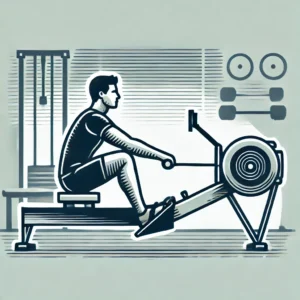
Advanced
At the advanced level, your cardio training can become more structured, with a focus on fine-tuning performance, improving speed and endurance, and possibly preparing for competitive events.
- Use periodization in training: Periodization involves cycling through different phases of training, such as building endurance, focusing on speed, or peaking for an event. This approach helps avoid burnout and ensures balanced progress over time.
- Incorporate advanced techniques like fartlek or tempo runs: Advanced techniques like fartlek (speed play) and tempo runs help improve speed and endurance. These techniques push you to alternate between different paces and intensities within the same workout, providing a highly effective cardiovascular challenge.
- Consider training for events or competitions: Advanced athletes may want to set their sights on competitive goals, such as running a marathon, cycling in a race, or completing a triathlon. Training for specific events gives your workouts focus and helps improve performance through targeted preparation.

Conclusion
Cardio training is a vital component of any well-rounded fitness routine, offering numerous physical and mental health benefits. Whether you’re looking to improve heart health, lose weight, or build endurance, there’s a cardio workout suited to your goals and fitness level. As you’ve seen, adapting your approach based on your experience—whether you’re a beginner, intermediate, or advanced athlete—can help you stay on track and continue progressing.
Incorporating variety, staying motivated, and maintaining proper form are key to long-term success. By balancing cardio with strength training, focusing on recovery, and embracing emerging trends like AI-driven workouts and virtual reality, you can keep your routine fresh and exciting.
Remember, cardio is not just about burning calories or improving performance—it’s about enhancing your overall quality of life. Regular cardio exercises improve heart health, boost mood, increase energy levels, and help you build a resilient, healthy body.
As technology continues to advance, the future of cardio training is bright. With personalized training plans, immersive workouts, and more accurate tracking devices, staying fit has never been more engaging or accessible. No matter where you are in your fitness journey, cardio will always be an essential tool for living a healthier, more active life.

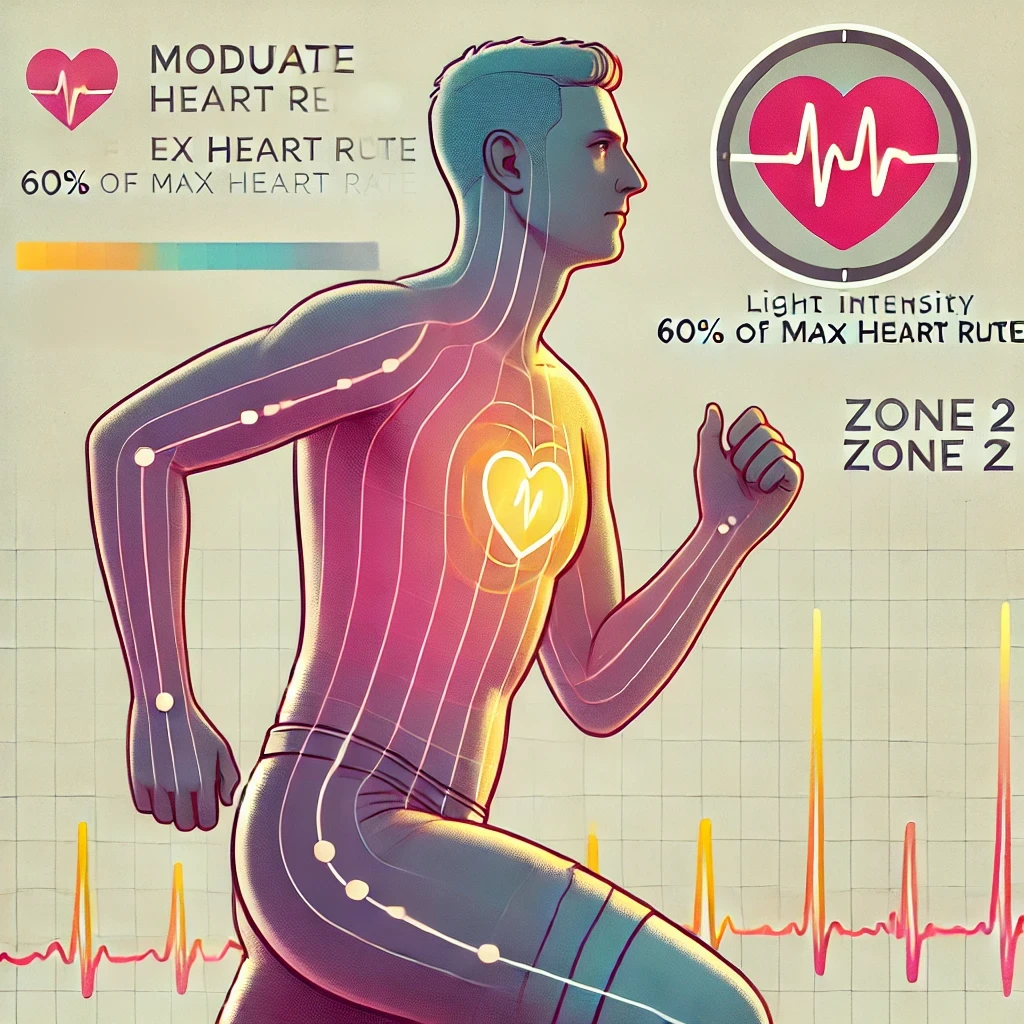




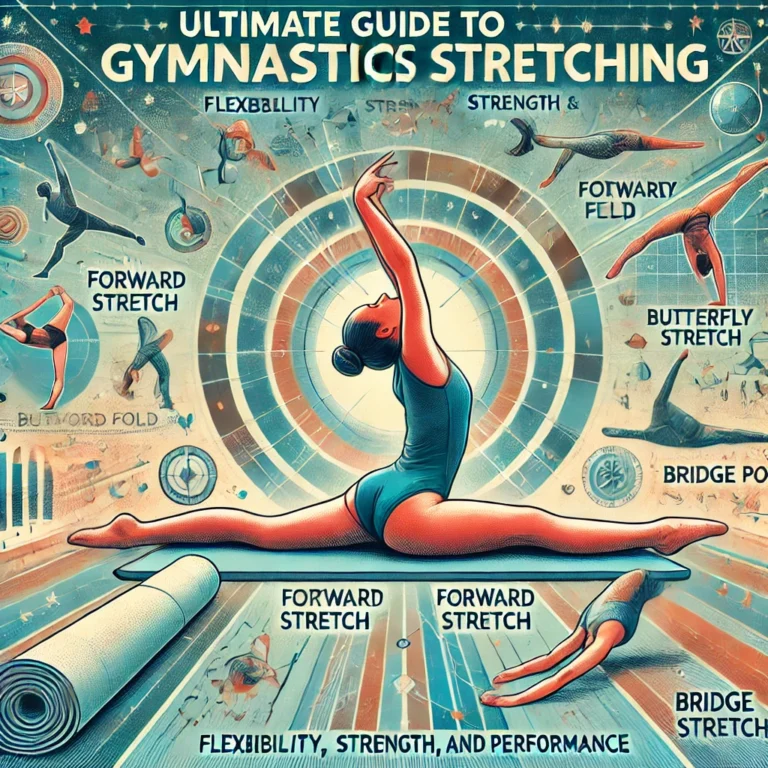
4 Comments
Comments are closed.